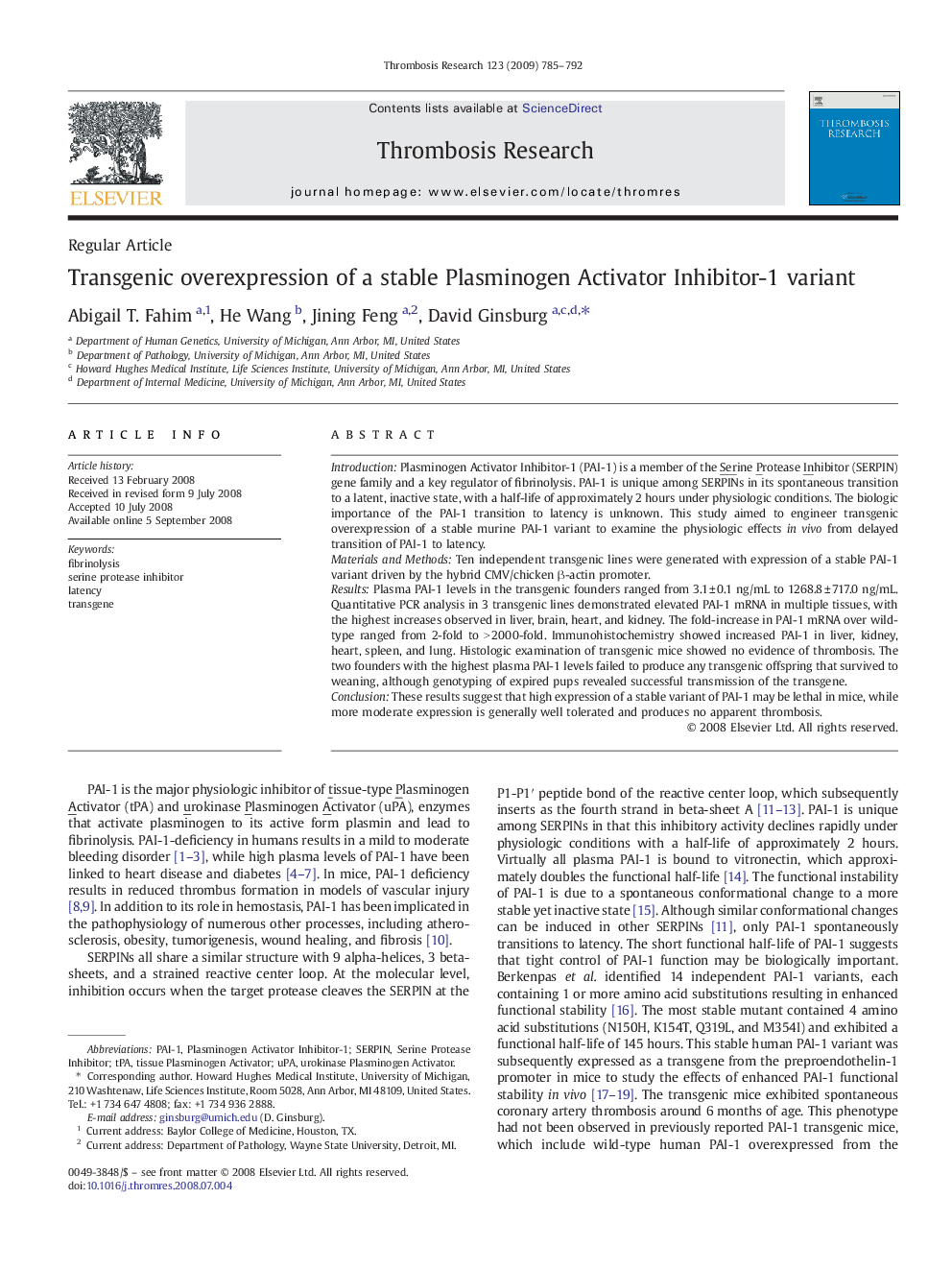| Article ID | Journal | Published Year | Pages | File Type |
|---|---|---|---|---|
| 3028450 | Thrombosis Research | 2009 | 8 Pages |
IntroductionPlasminogen Activator Inhibitor-1 (PAI-1) is a member of the Serine Protease Inhibitor (SERPIN) gene family and a key regulator of fibrinolysis. PAI-1 is unique among SERPINs in its spontaneous transition to a latent, inactive state, with a half-life of approximately 2 hours under physiologic conditions. The biologic importance of the PAI-1 transition to latency is unknown. This study aimed to engineer transgenic overexpression of a stable murine PAI-1 variant to examine the physiologic effects in vivo from delayed transition of PAI-1 to latency.Materials and MethodsTen independent transgenic lines were generated with expression of a stable PAI-1 variant driven by the hybrid CMV/chicken β-actin promoter.ResultsPlasma PAI-1 levels in the transgenic founders ranged from 3.1 ± 0.1 ng/mL to 1268.8 ± 717.0 ng/mL. Quantitative PCR analysis in 3 transgenic lines demonstrated elevated PAI-1 mRNA in multiple tissues, with the highest increases observed in liver, brain, heart, and kidney. The fold-increase in PAI-1 mRNA over wild-type ranged from 2-fold to > 2000-fold. Immunohistochemistry showed increased PAI-1 in liver, kidney, heart, spleen, and lung. Histologic examination of transgenic mice showed no evidence of thrombosis. The two founders with the highest plasma PAI-1 levels failed to produce any transgenic offspring that survived to weaning, although genotyping of expired pups revealed successful transmission of the transgene.ConclusionThese results suggest that high expression of a stable variant of PAI-1 may be lethal in mice, while more moderate expression is generally well tolerated and produces no apparent thrombosis.
